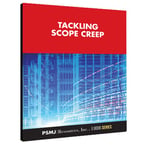 Sometimes you don’t realize that the client is asking for work outside of the scope of services until you are already over budget and off schedule.
Sometimes you don’t realize that the client is asking for work outside of the scope of services until you are already over budget and off schedule.
One of the best ways to identify “scope creep” is by referring to your task outline. A task outline is the most critical element in good scheduling and budgeting, so don’t skimp on its development.
A good outline should:
• Contain all possible tasks that can affect the schedule or budget of the project.
• Identify any tasks that will be assigned to subconsultants.
• Have a separate task for project management activities.
• Be “deliverable-based” rather than “task- or activity-based.”
The completion of the task should focus on specific deliverables so you can measure progress and completion easily. Make the task outline the center of your system of project control. If you know your outline well, you will be able to notice when work moves beyond what was agreed upon.
Budgeting for project management. When budgeting for project management, PSMJ recommends using the “10 percent rule”—designate 10 percent of your project budget for project management. This does not mean that you add 10 percent more hours to the project! These hours are already in your projects, they just haven’t been defined in the budget.
Does project management have a definable scope? You bet. You are budgeting for three major tasks:
-
Planning—Lack of planning is the number one reason projects go bad. You need to make sure this task is adequately funded.
-
Project status—This includes invoicing, project reports, etc.
-
Client and scope management—These may seem like separate entities, but they are intertwined. If you want to better manage your client, you need to better manage your project scope. If you want to stop scope creep, you need to better manage your client.!
Economies of scale. The 10 percent rule is recommended as a “rule of thumb,” and may vary depending on project size. In general, the percent of the project fee allocated for project management is inversely proportional to the size of the project. If the project is large, say $700,000, you may need to devote seven or eight percent of the budget to project management tasks. If the project is upwards of $1 million, you might budget only five percent. However, be careful how much you cut. Devoting two percent of your budget for project management is stretching it a bit thin.
The opposite will be true for very small projects. If you are doing a $5,000 site observation project, you may want to budget 12 or 13 percent for the smaller project.
 Scope creep happens, but you can learn how to take control of your architecture or engineering firm’s destiny, and start planning against scope creep. Check out PSMJ's complimentary ebook Tackling Scope Creep on on tips on how to avoid, manage, and eliminate it!
Scope creep happens, but you can learn how to take control of your architecture or engineering firm’s destiny, and start planning against scope creep. Check out PSMJ's complimentary ebook Tackling Scope Creep on on tips on how to avoid, manage, and eliminate it!
You also might be interested in these project management-related blog posts
4 Essential Project Management Tips for A/E Professionals
How to Overcome Impediments to Effective Project Management
Project Change Management – How Other Industries Do It
The 6 Things to Demand from Project Management Software
Today's Top Ten Project Management Trends



